
List of top 10 toxic chemicals, preservatives and harmful additives in supplements and foods!





Every person has a list of habits and routines they trust themselves to accomplish each day. But when it comes to achieving the goals we say we really want, there’s often a lack of self-trust that they will ever be accomplished. Doubt is right under the surface.
How can you overcome self-doubt and get on track to achieve the big goals you have in mind?
It comes down to putting the proper habits in place, and creating self-discipline that drives you in the right direction.
Bestselling author H. Jackson Brown Jr. described the need for discipline this way: “Talent without discipline is like an octopus on roller skates. There’s plenty of movement, but you never know if it’s going to be forward, backwards, or sideways.”
Here are three steps you can take to get unstuck and start seeing success.
It might seem counterintuitive that small steps will help you to achieve big goals, but it works.
That’s because making big, monumental changes all at once can seem overwhelming. Quitting cold turkey, completely changing your diet, or reorganizing your finances overnight can seem impossible.
As a result, most people don’t even start.
Small changes are easier to achieve. And each time you accomplish a small step you gain self-confidence. That confidence then empowers you to take another step. Repeated small steps create good habits that become routine.
Want to start working out? Start small. Take the stairs instead of the elevator. Park your car further away to add walking time. Or download an exercise app that gradually builds your strength.
Want healthier eating habits? Take one step by starting your day with a green juice. If the idea of a juicer and prepping all those veggies seems too much, get an organic green juice powder. In 30 seconds you’ll have taken a significant step to nourish your body.
By taking small steps in the right direction, you’ll start creating the momentum you need to see real change in your life.
With everything you have to do each day, it’s easy to go on autopilot as the time passes in a blur.
It’s important to accept where you are in order to get where you want to be.
Increasing your mindfulness can help. When you focus on what you’re actually doing, you’re setting the stage to make conscious choices.
Acceptance does not mean you should judge yourself harshly. It simply means consciously observing what you are doing, and how you are feeling in the moment.
Adding in just 10 minutes a day of meditation can help to focus your conscious and unconscious brain on what you really want, and make those goals easier to achieve.
Discipline is not achieved by flipping a switch. It’s a practice that you engage in every day.
Don’t expect perfection as you start making positive changes. If you find yourself getting sidetracked, take a deep breath and start fresh the next day.
As author Carl Bard said, “Although no one can go back and make a brand new start, anyone can start from now and make a brand new ending.”
Your ability to pick yourself up after you fall down will train you in the art of discipline and build your self-confidence. Over time, that discipline will become an automatic habit.
With practice you’ll find yourself making real progress toward your goals.

While essential for life, your water could be silently destroying your health, one sip at a time. Between industrial dumping in waterways, pesticide runoff, prescription drug residues, and heavy metals, water is more contaminated than ever.
These toxins in water pose a serious long term risk to your health. So it’s essential to learn what chemicals are lurking in water so you can stay hydrated without shortening your lifespan.
Here are 5 of the worst types of toxins hiding in water supplies today.
Lead-contaminated water isn’t just a thing of the past. It’s a very real problem today in cities and towns across the country.
The infrastructure that carries our drinking water is old, and old pipes were made from lead. These pipes can corrode, releasing up to ten times the allowable amount of lead into drinking water.
Lead is toxic to nearly every organ in the body and is particularly damaging to children. Exposure to lead can cause developmental issues, stunted growth, behavioral problems, learning disabilities, and even brain damage.
Studies have even suggested that lead is linked to autism, prostate cancer, and reproductive issues (for men and women).
When agricultural farms spray their crops, or companies spray insecticides to combat insect-borne diseases, these chemicals don’t just degrade into harmless particles. Instead, these chemicals infiltrate the water supply, and remain there for an alarming amount of time.
DDT, for example, was an insecticide widely used in the United States until it was banned in 1972 due to its negative environmental impact. Some countries, however, still use DDT to this day and it’s a big cause for concern.
DDT lasts for decades in the soil where it can continuously leech into the water supply. It can also travel the atmosphere to contaminate the water supply of regions thousands of miles away.
Among other things, DDT can cause reproductive and liver damage, and it is identified as a probable cancer causing substance.
Other harmful chemicals used in agriculture such as dacthal, HCB, and glyphosate, can be found in our drinking water as well.
Genetically modified corn and soy are typically heavily sprayed with glyphosate. Recent animal studies showed that chronic low levels of glyphosate caused fatty liver disease.
Chlorine is used as a disinfectant for cleaning products or keeping public pools sanitary. That’s why it’s commonly used to sanitize sewage.
But there’s no place for chlorine in our drinking water.
That’s because chlorine can react with dissolved organic materials in the water, creating chemicals called DBPs (disinfection by products) that are much more toxic than chlorine itself.
Since it can react with the water in your gut it can impact healthy bacteria, which are essential for a healthy digestive and immune system.
PCBs, or polychlorinated biphenyls, are industrial chemicals that were used in paints, electronics, fluorescent lights, and insulation.
And even though PCBs were banned almost 40 years ago, they are still harming our health to this day. That’s because PCBs are present in landfills where they slowly break down and release into the environment.
According to the Environmental Protection Agency (EPA), PCBs can cause significant damage to your health.
Animal studies have shown that PCBs can cause cancer, and result in substantial damage to the immune system, reproductive system, nervous system, and endocrine (hormone) system.
In other words, PCBs can wreak havoc on your body.
If you have a “silver” filling in your mouth, you already have mercury exposure. However, this toxic heavy metal also makes its way into the food and water supply.
Today over half of all mercury released into the atmosphere comes from industrial activities such as burning fossil fuels like coal. Once mercury gets into the atmosphere, it contaminates rivers, lakes, drinking water, and oceans.
Since the ocean is contaminated with mercury, large fish such as tuna or swordfish are riddled with it. Much like the fish, when we drink mercury-contaminated water, it accumulates in the body where it can cause significant harm.
Mercury has toxic effects on the brain, digestive, and immune system. It can also damage the lungs, kidneys, skin, and eyes.
The World Health Organization has even identified mercury as one of the top ten chemicals that are a major public health concern.
These five types of toxins are only the tip of the iceberg when it comes to water contamination.
There’s a long list of other harmful chemicals that are hidden in our water such as arsenic, perchlorate, dioxins, and pharmaceutical drug residues.
But water is essential for health. So how you stay hydrated without harming your health?
Get an under-the-sink or countertop quality filter that removes heavy metals, pharmaceutical resides, pesticides, chlorine and more.
Once you have a quality filter in place, fill a glass or stainless steel water bottle and bring it with you wherever you go. That way you won’t be forced to drink questionable restaurant water, or hormone-disrupting bottled water.
You may also want to consider a shower filter since chlorine can dry out your skin and it is inhaled through water vapor—which can lead to health issues.
It’s very likely heavy metals and other toxins have already accumulated in your body. So while you prevent additional exposure from contaminated water, you also should take measures to remove these toxins from your body.
Many natural health experts recommend hydrated zeolite as the most effective way to remove these toxins.
Zeolite is a natural mineral that—when cleansed and sized properly—can bond to toxins throughout the body before passing through.

We sprouted onto the health and wellness scene in 2012 with a vision of organic goodness accessible to everyone. To celebrate our fifth birthday we’re giving the gift of savings. Enjoy the good of nature, delivered right to your door.
Our birthday gift to you is a FREE one-year Member pass.
Members are in a special club that gives access to sale prices, every day, on every order. With Membership you get savings of 20% to 25% or more off our everyday rates, instantly.
That means no waiting for a promotion or special offer. You automatically get our great value at the lowest price.
To redeem your gift, simply select Join Now & Save in the top right corner of the page, pick your products and use the promo code BIRTHDAY on checkout.
Best of all, with our birthday celebration, your one-year Member pass is free with any purchase of our pure, wholesome supplements!
All you have to do is select Join and use the promo code: BIRTHDAY
JOIN NOW WITH PROMO CODE: BIRTHDAY
While every Member can earn fast cash for referrals (learn more), during our birthday month we’ve got an extra bonus for those who share the goodness.
And we make it easy to share. All it takes is a smartphone and a passion for healthy living. That’s because as a Member you get your own free TheGoodInside website.
Anyone who then joins as a Member (remember, they can also join free with promo code BIRTHDAY) is counted as a birthday bonus enrollment, and you earn extra cash.
This bonus is in addition to our regular 25% referral bonus.
How much extra cash can you get? It depends on how much goodness you share.
To qualify, the new Member enrollment must be in the month of March with a product purchase. The bonus calculation will be based on total number of personal enrollments in March. And the enrolling Member must be active with 100 in personal points in March to be eligible for the bonus.

Your body needs protein for survival. Amino acids — the building blocks of protein — are necessary for everything from immune function, metabolism and weight management to muscle repair, growth, development and performance. There’s also research that shows protein helps you feel alert, as well as more satiated for a longer period of time. The common types of protein powders fall into two categories: animal-based protein (casein, whey and egg) and plant-based protein (hemp, rice, pea, sacha inchi, potato, etc.).
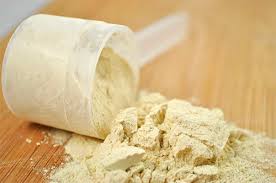
Whey protein is a by-product of the cheese manufacturing process and is the liquid that is left behind after milk is curdled and strained. Since whey protein is derived from milk, lactose intolerance is one of the most common side effects from consuming whey protein.
Whey protein is a common allergen and can affect the immune system of individuals who may be allergic to it. Whey proteins are also notorious for causing bloating which is a symptom of the body’s inability to digest it. Symptoms related to digestive issues include abdominal pain, gas, bloating and diarrhea.
Whey protein is high in sulfur-based amino acids. This means that whey protein is acid forming which can cause significant calcium loss and weakening of the bones known as osteoporosis. Since over-consumption of whey protein leads to increased acidity and lowered pH of the blood, it is believed that this may give rise to various kidney disorders.

Plant-based protein, on the other hand, is a much easier digestible source of protein for humans without the side effects associated with whey protein.
Plant protein is perfectly packaged along with an abundance of phytonutrients, antioxidants, vitamins, minerals, and fiber—all critical components for optimal health and disease prevention. Blended plant-based protein provides a full spectrum of amino acids through complementary sources and is alkaline forming in the body.


Sweet seasonal apples combine with tart berries to make a refreshing and flavorful smoothie you’ll love. And you’ll never guess there are an extra 44 organic superfoods inside to alkalize, energize and strengthen immunity.
¾ cup organic apple cider
¼ cup organic apple sauce
½ cup fresh or frozen organic raspberries
1 scoop Super Green Juice powder
½ banana
Blend all ingredients and enjoy! If you want extra zing, add ½ tablespoon of apple cider vinegar.
Apple Cider is unpasteurized, unfiltered juice from apple mash and for this reason it’s much healthier than regular apple juice. It delivers fiber, minerals and antioxidants. Go for organic to avoid pesticides.
Fresh or frozen, raspberries add fruity tartness to the smoothie and amazing health benefits. In addition to fiber and vitamin C, raspberries are full of the antioxidants ellagic acid and quercetin, two phytochemicals which are protective of cell health.
Bananas add a smooth creamy texture, a hint of sweetness, and a bump of potassium to replenish minerals.
Super Green Juice powder provides 44 organic superfoods full of natural vitamins and minerals. You also get 3g of fiber, plant-based enzymes, and 1 billion probiotics with every scoop.
*These statements have not been evaluated by the Food and Drug Administration. Our products are not intended to diagnose, treat, cure or prevent any disease.
Originally posted by The Good Inside. Visit http://newmark.thegoodinside.com/raspberry-apple-cider-smoothie/#.WCRVqPkYjIU




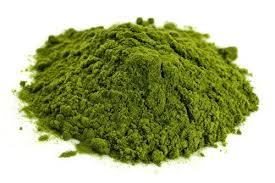


The simple answer? No.
The use of genetic engineering, or genetically modified organisms (GMOs), is prohibited in organic products. This means an organic farmer cannot plant GMO seeds, an organic cow can’t eat GMO alfalfa or corn, and an organic soup producer can’t use any GMO ingredients. To meet the USDA organic regulations, farmers and processors must show they aren’t using GMOs and that they are protecting their products from contact with prohibited substances, such as GMOs, from farm to table.
In 2014, 93% of corn and 94% of soybean acres in the U.S. were GMO, and these crops sneak into your food in places you might not expect, from high-fructose corn syrup to sugar (made from sugar beets) to chemicals made from soybeans are used as additives in processed foods. Additives including corn starch, corn meal, corn syrup, glucose, dextrose, canola oil, cottonseed oil, soy oil, soy flour, soy lecithin and “protein extracts” — present in many processed foods — are likely derived from GMO crops. Livestock feed is also often made from GMO crops.
GMO prevention measures are documented in the organic farmer’s organic system plan. This written plan describes the substances and practices to be used, including physical barriers to prevent contact of organic crops with prohibited substances or the products of “excluded methods” such as GMOs. On-site inspections and records verify that farmers are following their organic system plan. Additionally, certifying agents conduct residue testing to determine if these preventive practices are adequate to avoid contact with substances such as prohibited pesticides, antibiotics, and GMOs.
The Most important aspects of buying and eating organic is understanding food labels.




We all have a right to know what’s in our food, how it’s produced, and where it’s from. But food companies are often not required to give us the information we want to know. The current rules on food labeling leave a lot of room for vague claims that make it difficult to differentiate between food produced by sustainable farmers using humane practices, and corporate agribusinesses green-washing their products.
Even more confused? Don’t be. This quick tip guide will help.
 Certified Organic
Certified Organic
Right now the most meaningful label on your food, in terms of upholding specific government requirements, is the U.S. Department of Agriculture (USDA) organic seal. For a product to be certified organic, it’s required to meet specific standards:
 USDA Inspected
USDA Inspected
A USDA inspection seal means that your food meets certain quality standards and has been inspected by USDA employees or company employees under USDA supervision to rank its quality. All USDA-inspected meat and poultry (the vast majority of the meat in grocery stores) should have a USDA seal of inspection and a code for the producing establishment.
Be Careful. Meat and egg labels with a grade (such as USDA Grade A beef or Jumbo eggs) are graded based on quality and size, not production methods, so this seal lacks information about the company’s practices.
 Treated with Irradiation
Treated with Irradiation
In grocery stores, food that has been irradiated must be labeled and marked with a radura symbol. Why are foods treated with irrigation? In Layman’s terms, foods that are treated with irrigation are preventing the growth and spread of Food borne Illness, longevity in the shelf life of food (Product v.s.Profit), and Sterilization- mainly used for hospitalized patients with severely compromised immune systems.
Is this a Pro or a Con you ask? I suppose that depends on what you consider a risk. Are you willing to risk consuming pesticides for a product that will sit on a shelf at a store for months longer than the fresh product? I didn’t think so. Just because you see a label, does not mean the food is labeled for a safe cause. The Irrigation label is specifically placed to warn a consumer of irrigation, after the FDA was required by law to have open disclosure about how a product is treated during the manufacturing process. (Still think the government cares?)
 No Hormones Added
No Hormones Added
The labels “raised without added hormones,” “no hormones administered” or “no synthetic hormones” all mean that the animal received no synthetic hormones. Hormone-free labels do not disclose what the animals were fed or if they had access to pasture.
Federal law prohibits the use of hormones on hogs and poultry. Any hormone-free label on pork and poultry products is intended to mislead shoppers into thinking that the product is worthy of a higher price. The USDA requires that these labels on pork or poultry include a disclaimer: “Federal regulations prohibit the use of hormones in poultry/pork.”
However, federal regulations do permit the use of hormones in beef and dairy cattle. Recombinant bovine growth hormone (also known as rBGH or rBST) is a synthetic growth hormone commonly injected into dairy cattle to increase milk production. Several hormones are used in beef cattle to speed up growth.
Thanks to years of activism, “RBGH-free” or “rBST-free” labels can now be used on milk products to indicate that the cows did not receive synthetic hormones. However, due to pressure from Monsanto and the dairy industry, such labels on dairy products usually come with a disclaimer that the FDA acknowledges no difference between milk produced with or without the hormone (Yeah, right).

 Misleading ‘Organic’ Food Labels
Misleading ‘Organic’ Food Labels
Many foods found in the grocery store are intentionally (and strategically) labeled to mislead the consumer into buying a product that has a seal of ‘Certified Organic’ but does not meet up to the USDA standards of Certified Organic. Do not be fooled by the competition. For a product to claim itself as ‘Organic’, federal regulations prohibit any organic claim on the principal display panel or use the USDA organic seal anywhere on the package. However, companies may, on the information panel, identify the certified organic ingredients (partial or whole) as organic and the percentage of organic ingredients. Simply put, manufacturers may use 10% organic flax seeds in their granola bars, 90% substitute, and can still claim organic on the food label.
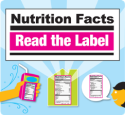
Remember this campaign?
A common misconception of proper buying habits is reading the label. Sugars? Check. Saturated Fat? Check. Serving Size? Check. Yep, all looks good here.
Wrong.
Nutritional facts are required under a standard of law that a board deems suitable for manufactures and consumers. A even pendulum of product v.s.profit. If you knew that a product label claimed a product to be “Fat Free” but contained 87% Genetically Modified Organisms, would you still buy and consume that product? Of course not. However, without the proper education of food labels, many households will succumb to the fad of “Fat Free” foods and pretty, green “Certified Organic” stamps.
Ready to change your buying and eating habits? Click here.



There are Millions of Honey Bee’s that were killed when the Government along with the EPA decided to spay pesticides, “Toxic Gas”, in South Carolina aimed to kill Mosquito’s that could “Possibly”, yes I said Possibly be carrying the Zika Virus. I don’t know where to begin talking about this issue.

Let’s first talk about the Honey Bees!
On Sunday morning, the South Carolina honey bees began to die in massive numbers.
Death came suddenly to Dorchester County, S.C. Stressed insects tried to flee their nests, only to surrender in little clumps at hive entrances. The dead worker bees littering the farms suggested that colony collapse disorder was not the culprit — in that odd phenomenon, workers vanish as though raptured, leaving a living queen and young bees behind.
Instead, the dead heaps signaled the killer was less mysterious, but no less devastating. The pattern matched acute pesticide poisoning. By one estimate, at a single apiary — Flowertown Bee Farm and Supply, in Summerville — 46 hives died on the spot, totaling about 2.5 million bees.
Walking through the farm, one Summerville woman wrote on Facebook, was “like visiting a cemetery, pure sadness.”
[A common pesticide may be a menace to pollinators. Know how to protect them.]
A Clemson University scientist collected soil samples from Flowertown on Tuesday, according to WCBD-TV, to further investigate the cause of death. But to the bee farmers, the reason is already clear. Their bees had been poisoned by Dorchester’s own insecticide efforts, casualties in the war on disease-carrying mosquitoes.
On Sunday morning, parts of Dorchester County were sprayed with Naled, a common insecticide that kills mosquitoes on contact. The United States began using Naled in 1959, according to the Environmental Protection Agency, which notes that the chemical dissipates so quickly it is not a hazard to people. That said, human exposure to Naled during spraying “should not occur.”
In parts of South Carolina, trucks trailing pesticide clouds are not an unusual sight, thanks to a mosquito-control program that also includes destroying larvae. Given the current concerns of West Nile virus and Zika — there are several dozen cases of travel-related Zika in South Carolina, though the state health department reports no one has yet acquired the disease from a local mosquito bite — Dorchester decided to try something different Sunday.
It marked a departure from Dorchester County’s usual ground-based efforts. For the first time, an airplane dispensed Naled in a fine mist, raining insect death from above between 6:30 a.m. and 8:30 a.m. Sunday. The county says it provided plenty of warning, spreading word about the pesticide plane via a newspaper announcement Friday and a Facebook post Saturday.
[Call off the bee-pocalypse: U.S. honeybee colonies hit a 20-year high]
Local beekeepers felt differently.
So if honeybees did disappear for good, humans would probably not go extinct (at least not solely for that reason). But our diets would still suffer tremendously. The variety of foods available would diminish, and the cost of certain products would surge. The California Almond Board, for example, has been campaigning to save bees for years. Without bees and their ilk, the group says, almonds “simply wouldn’t exist.” We’d still have coffee without bees, but it would become expensive and rare. The coffee flower is only open for pollination for three or four days. If no insect happens by in that short window, the plant won’t be pollinated.
There are plenty of other examples: apples, avocados, onions, and several types of berries rely heavily on bees for pollination. The disappearance of honeybees, or even a substantial drop in their population, would make those foods scarce. Humanity would survive—but our dinners would get a lot less interesting.
Next Blog…… The effects of spraying Pesticides, “Toxic Gas” from Airplanes on top of people! We need to protect ourselves by Removing the Toxins from our body! Get you Free Detox Solution Report Here! Your will learn about the best, purist, safest way to Remove Toxins from our body!
Alan Newell – CHC, CN, PT
Shaped like a boomerang and coming in at a mere three pounds, your liver works hard for you everyday, possibly more than you could imagine. It’s the second largest organ in your bodyand yet, probably not one you give much thought to until something goes wrong. Your liver keeps things going, and is often referred to as the gatekeeper of your body. Like a silent housekeeper, it’s always working around the clock, cleaning up whatever goes in, and assisting with what goes out. Just like you mop up a mess on your kitchen floor, your liver does somewhat of the same thing with all the toxins from our food supply and the environment. It also performs everyday functions that you might not be aware of, and protects you from a number of nasty health conditions when you care for it properly.
Whatever you put in your body, your liver has to deal with and process, on top of other everyday functions, such as: use carbs, protein, and fats to process into energy, assist in digestion, use 30 percent of the circulating blood in your body every minute to perform chemical reactions that remove harmful toxins, distribute and store essential nutrients, make proteins, and detoxify your blood from carcinogens, or toxic invaders like alcohol, and other harmful food ingredients. And you thought your day job was hard!
As you can see, your liver health is nothing to play around with, so feeding it and your body beneficial foods only makes good sense. One of the best things you can do for your liver is to eat a healthy, plant-based diet. Health experts recommended eliminating or reducing animal foods to care for your liver, just as much as they do eliminating alcohol, refined sugar, excess caffeine, and processed foods. Why? A whole foods, plant-based diet is free of toxins that are found in animals, such antibiotics, natural hormones, along with a host of other ingredients. It’s also rich in antioxidants, naturally cleansing properties like fiber and water, and contains non-acidic proteins that are more friendly to your body than animal sources. Considering 85-90 percent of all blood that leaves your stomach and intestines after digestion goes straight to your liver for the processing of nutrients or the removal of toxins, you can easily see why it’s important to eat a diet that’s friendly to your blood and liver – so your liver can produce nutrients more than it does filter out toxins!
Here are 10 of the top liver-friendly foods to include in your diet, which aid in daily cleansing, rejuvenation, detoxification, and nourishment for the vital organ in your body:
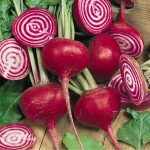
Beets are bright and beautiful, like an insane shot of wellness for your whole body, including your liver. Their red, purplish hues may seem a bit overwhelming, but nature was smart in the way she created foods to mimic the benefits they have on the body. For example, beets look like the color of blood, and coincidentally, they naturally cleanse and purify the blood, which boosts liver function, and nutrient production in your body. Beets are also high in antioxidants and important nutrients including: folate, fiber (in the form of pectin), iron, betaine, betalains, betacyanin, and betanin. Pectin is a soluble form of fiber that’s well known for its cleansing properties and ability to keep you full. Beets’ fibers and nutrients help the body flush toxins that are often stored in our liver so they can be evacuated out of the body instead of reabsorbed into the bloodstream. So, stop hating on the bloody color of beets- these little red gems are amazing for you! Find out how to use them best with some of our best beet recipes.

Shaped like mini trees, broccoli gives life to your body and its bright green hues indicate the high level of antioxidants and chlorophyll found in the cruciferous veggie. Broccoli is high in fiber that naturally cleanses the body from carcinogens and other toxins. Broccoli, cauliflower, Brussels sprouts, and other members of the cruciferous veggie family also contain glucosinolates which help the liver produce enzymes to aid in the removal of toxins and aid in digestion. Broccoli is also a good source of fat-soluble Vitamin E, an especially important antioxidant for the liver. If you’re tired of typical broccoli recipes, try these 12 Yummy Ways to Enjoy Broccoli for something new!

Sweet potatoes (along with carrots and winter squash such as butternut and pumpkin) are all rich in beta-carotene, which is a natural anti-inflammatory nutrients your body loves! Beta carotene converts to Vitamin A in the body, directly in the liver. It’s important to get your Vitamin A through beta-carotene rich foods in place of supplements. Supplements with too much Vitamin A can be toxic to the liver since Vitamin A is a fat soluble vitamin (meaning more gets stored than excreted.) Sweet potatoes and other foods rich in Vitamin A, however,do not cause liver toxicity and can not be stored for long-term use like supplements can. Sweet potatoes are also rich in fiber and Vitamin C, other cleansing and immunity-boosting nutrients that help your liver function at its best. Try using sweet potatoes roasted in a hearty, plant-based dinner, or use them as a simple lunch by stuffing them with salsa and some hummus for an easy mid-day meal.

Lemons love your liver and your liver loves them right back! Lemons are a natural cleansing food and essentially one of the best to “get things going” in all areas of your body. Lemons provide a wealth of antioxidants, primarily Vitamin C, and they help your liver produce more enzymes which give you more energy and help with digestion. Lemons are also a natural replacement for salt in the diet since they’re high in electrolytes that support your body but that don’t dehydrate your cells like sodium does. In fact, they’re often recommended as a salt replacement for individuals on a liver disease diet for this reason. Lemons are also alkalizing to the body, despite being acidic on their own. Once they enter the body, they help neutralize toxins, excrete wastes, and jump start the entire digestive process. Use organic lemons since you don’t want any chemicals from conventional lemon peels interfering with their benefits. This Red Lentil Soup with Fresh Cilantro and Lemon is a great recipe to care for your liver and your appetite at the same time!

Speaking of lentils, your liver loves them too! Lentils are rich in fiber, which assists with the cleansing process and they’re also a natural source of plant-based protein. Too much protein is not recommended since it can be especially hard on the liver. Lentils provide just enough protein to support your body without causing any harm. They’re also some of the easiest legumes to digest, which will help your body use them better for nutrient distribution.

Sliced avocado on a cutting board
Healthy fats are important to any diet, plant-based are best, but too much is never a good thing when it comes to fats. Your liver needs fat for proper function, but too much can cause problems with bile production, which will affect the digestion of fats and possibly other issues of digestion. Healthy fats that are beneficial for your liver include: avocados, walnuts, pumpkin seeds, and almonds, along with olives, coconut, chia seeds, and flax seeds. Other nuts and seeds are also beneficial, but be sure to avoid most oils, which can be hard on the liver to process and distribute into nutrients. Some exceptions include small amounts of olive, flax, or coconut oil. Avocados and walnuts are especially rich in properties that help your body produce more glutathione, which is used for the detoxification and filtration of harmful substances. This Creamy Pumpkin Acai Bowl is a fantastic way to enjoy avocados in a delicious new way if you need a fresh idea.
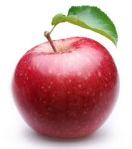
Apples are rich in pectin, the soluble fiber that helps remove toxins and cholesterol from the blood, which helps your liver big time! They’re also rich in malic acid, a naturally cleansing nutrient that removes carcinogens and other toxins from the blood. Granny Smith apples are especially rich in malic acid, along with being one of the most antioxidant-rich apple varieties. All apples are great for your liver, however, but be sure to choose organic apples since they’re one of the worst sources of pesticides in conventional form.

Garlic is rich in allicin and selenium, two powerhouse nutrients for your liver. They act in cleansing and in nourishing the entire body, especially the blood. Selenium is a naturally detoxifying mineral and allicin helps ward off immune system invaders, which helps lighten the load on your liver. Garlic also activates enzymes in the liver which help with overall digestion and flushing out toxins. Use whole garlic cloves as the best option, instead of processed minced garlic or powder. Roasted Garlic, Miso and Green Soup would be an excellent liver-friendly recipe to enjoy.

Like garlic, onions are also rich in allicin that flush out the liver and the digestive tract. They’re also packed with potassium, fiber, phytonutrients, and flavonoids that help your body do everything from fight a nasty cold to repel toxic chemicals. Onions may stink odor-wise, but they’re are a well-known detoxifying food to enjoy anyhow. To avoid possible indigestion, avoid too many raw onions and give them a gentle cooking. Try them in a recipe such asSoothing Vegan French Onion Soup or Eggplant, Onion and Tomato Stew.
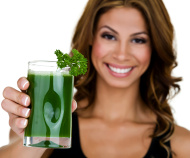
The nutritional all-star ingredients for just about every health issue are leafy greens. Like the rest of your body, your liver loves the leafies! Spinach, kale, chard, romaine, arugula, and collards are all some of the most nutrient dense leafy greens to enjoy. They’re packed with chlorophyll to purify the blood, which assists in liver function and they help neutralize heavy metals, toxic chemicals, and even pesticides that burden the liver. Just be sure to buy organic once again, so you get the benefits. Tired of your usual recipes? Here are 35 Delicious Ways to Eat More Greens!
Now give your liver some plant-based lovin with these foods and remember that sugar, alcohol, lack of exercise, multiple trips to the coffee maker, animal foods, and stuff out of a box and bag with a laundry list of ingredients are not your liver’s friend. Take care of your liver so it can take care of you!
Alan Newell, CN